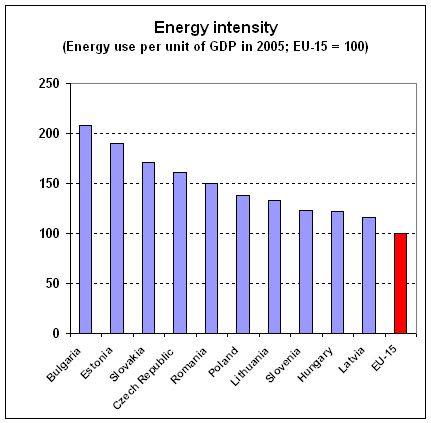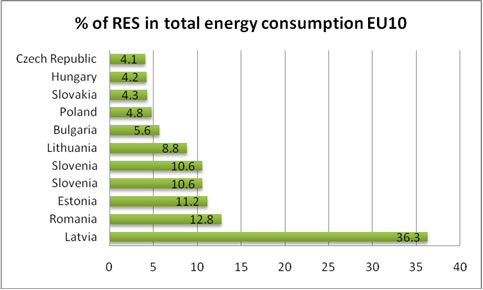Climate change and energy
EU money must support the shift to an energy- and resource-efficient economy
World fuel and energy prices have been incredibly unstable in the last few years, bringing about regular “panic windows” for consumers. EU money in the new member states has to be directed towards energy efficiency, sustainable resource use and recycling, eco-friendly technologies and sustainable mobility. In the short-term this can provide a way out of the economic crisis; in the long term it can help to achieve real sustainable development.
Such development will reduce regional dependence on the import of raw materials and will accelerate technological innovation and job creation. In December 2008, the EU adopted the long awaited climate and energy package which establishes a framework to fulfill EU climate targets – to cut European emissions by 20% by 2020 and increase the share of renewables on final energy consumption by 20%. These targets have placed a hefty burden on many new member states – but they can be achieved by substantial and well-directed assistance from the EU funds in the 2007-2013 period.
Energy: boosting efficiency is the best way to boost energy security
In the new member states, total energy intensity is still, on average, 1.4 times higher than in the member states of western Europe. In recent years, Latvia, Estonia, Poland, and Lithuania have achieved small improvements – yet there is still the potential for massive energy efficiency improvements in the region
The EU funds and EIB loans should be used as an incentive to help secure great energy savings, especially for public buildings, households and the high-rise blocks of flats common to most CEE towns that are notoriously wasteful of heat and in urgent need of refurbishment. At the same time, all EU investments in buildings and industry should be conditional on very high low-energy or passive house standards. The European Commission has calculated that buildings are responsible for approximately 40% of the CO2 emissions across the EU, creating thus the largest mitigation potential where all technology and know-how is mature and immediately available (as is not the case, in comparison, with the technology for carbon capture and storage ).
Major financing from the EU funds for improvements in energy efficiency will significantly reduce energy consumption – by an estimated 30% in the energy sector resulting in an 11% cut in the EU’s final energy usage. The Commission has also estimated that the benefits from energy savings can amount to €1000 per household annually and can create up to 500,000 jobs in Europe, which would multiply the positive impacts of the EU funds as well as the spillover into social policy.

Source: European Environment Agency, 2007
Energy: investing in a renewable future
EU money can also be used to help unlock the large but unused renewable energy potential of the CEE countries. Apart from being low carbon and nature friendly, biomass, wind, small hydro and solar energy generation is more job intensive than the coal and nuclear alternatives. If produced locally on a small scale, renewables promote community independence and eliminate traditional problems with conventional sources like local air pollution, landscape degradation or nuclear waste storages. Cities with a biogas heat and electricity generator will have lower rates of asthma and cancer rates than areas with coal power plants or big incinerators.
The production costs of renewable energy are expected to continue falling in the future, while the prices for oil, gas, coal and uranium are set to increase – to state the obvious, the latter are finite resources. Those countries that first embraced renewable energy are now the main exporters of the technology and are profiting from the global renewable energy boom (e.g. Denmark in the wind power sector). Investments in renewable energy, based on long-term strategies and appropriate environmental and economic criteria, are clearly investments into a high value-added industry which is advancing the economic competitiveness of some national economies.

Source: European Environment Agency, 2007
Low carbon development
Disappointingly, only 2.4% of all EU funding for the 2007-2013 period has so far been allocated for energy efficiency and renewable energy in the CEE countries. Enormous economic, social and environmental opportunity can be exploited here – on the one hand enhancing the cohesiveness of the EU, and on the other hand significantly helping the EU to reach its climate targets domestically. Apart from the environmental benefits, numerous spillover effects emerge from investing into EE and RES:
- Reducing dependence on oil and gas imports and thus really increasing energy security
- Improving competitiveness through reducing energy intensities and cutting production costs
- Alleviating “energy poverty” by cutting the energy bills of households
- Creating new jobs and business niches and spurring eco-technologies and high-tech innovation

